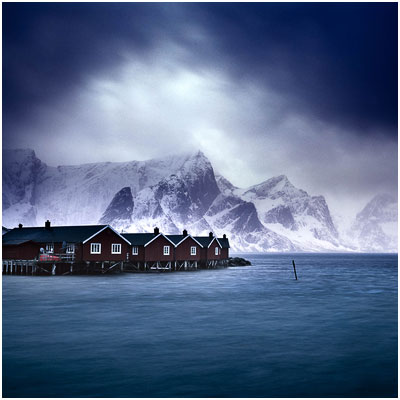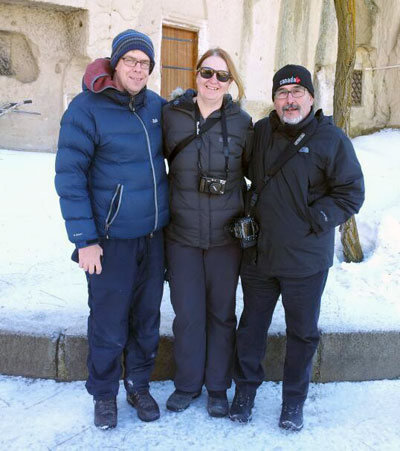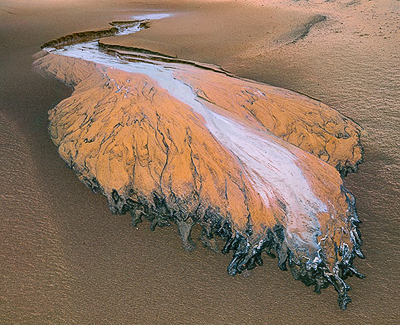I'm just home from Cappadocia, Turkey. It's been a few days now, and I just received my Velvia films back. As much as I love to shoot colour, I'm being swayed at the moment to go Black and White with them. There's something about the landscape there.....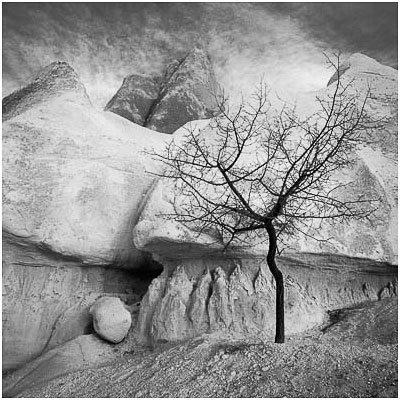 .... I will be back in a week or so with the finished images. I didn't shoot a lot of film. It was my first venture there, and it's a challenging place to photograph. But it's also very otherworldly too.
.... I will be back in a week or so with the finished images. I didn't shoot a lot of film. It was my first venture there, and it's a challenging place to photograph. But it's also very otherworldly too.
Airport Carry on (part 2)
Is it 'carry-on', or a carry on? ;-) I'm leaving for Norway in a short while, heading to Oslo, then up into the Arctic circle to start two photographic trips in the Lofoten Islands.
I was thinking a few days ago, how my ThinkTank Airport International (a superb bag) has become almost useless overnight now, because the airlines are defaulting to carry on weight restrictions of around 7kg (which is pretty useless for most things). So I packed up different alternatives and tried them out at home to see what the weight was like.
Firstly, I'm pleased to say that Norwegian Airlines have a carry on policy of 10kg, with an additional 'personal item', which really usually means a small packpack or laptop case :-) The upshot is that I've been able to pack my entire Mamiya 7II outfit (four lenses plus a spare body), and film and filters and a cuddly toy too, and keep the ThinkTank TakeOff bag I also own, to under 10KG. So it is 'all go' as far as I'm concerned. I really hate using backpacks - I get sore shoulders and when you're moving around airports, it just becomes added stress because of the reduced comfort. I much prefer to travel with a roller bag, and the ThinkTank's are extremely robust and durable. The gear can get thrown about by taxi drivers, or thrown about whilst moving around places with no impact to my gear.
But lets consider if the weight restriction was indeed 7kg......
I weighed the Mamya 7II outfit, and had to reduce it down to 1 body, and I also had to go to a backpack bag - a LowePro Vertex 200 bag. I managed to get the entire thing down to 7kg, but it meant I would have to stick the spare Mamiya 7II body into my coat pocket (it's compact enough to do that). The bag has enough space for a laptop, but this would tip the weight of the system over the 7kg limit......
In short, if you travel with a laptop, and a reasonable SLR system that includes the usual 24-70 and 70-200 f2.8 type of lenses, I'd guess that you would easily go over the 7kg limit every time.
So what to do?
Well, maybe it's time that we started looking at the specifications of the gear we use - one thing we never really consider is the weight of the camera gear itself. I've seen a lot of gear over the past few years, and some of it is like carrying a small, dense brick around with you: consider the Pro level bodies out there by Canon and Nikon. And the pro series lenses too - they're not light!
I bring this up to wonder, why do Pro systems have to be 'big' and 'heavy'? Is it to make the consumer feel he's bought something more substantial? Shouldn't pro systems be like pro racing bikes? Lighter than their consumer versions?
This might come down to an argument about durability. Some people feel more secure with all the weather-sealing and magnesium bodies out there, but I've never seen an SLR system fail on any of my workshops due to rain (and we get a lot of it here in Scotland).
I would argue that if you want to travel on planes, start considering the weight aspect of the gear you're intending on purchasing. Opt for a more consumer version of the body than those bricks that the camera manufacturers sell at their top end. Go for a body that is less durable, but lighter. The same should also apply to lenses.
Maybe this is something that can be put forward to camera manufacturers in future: we need lighter gear.
If you're thinking of flying a lot, then maybe you need to work on a 'flight-system', one that you know will not upset any air lines when you do go for a wander.
I also think it is worth considering other systems, rather than the usual stock SLR systems we've been using for some time now. I think systems like Sony's Nex 7 and the Panasonic / Olympus Micro-four-thirds (I'm a fan of this system) are terrifically light and compact. Of course this only applies to digital shooters. For the film shooters, maybe we need to go back to the drawing board and think of buying lighter medium format systems. Some of the 645 options out there are lighters (the exception being the Contax 645 - I have one, and the body and lenses are very heavy). My Mamiya 7II system is extremely light and compact for it being a 6x7 camera.
And one last word: less is more. Often I feel we take far too much gear with us. We take what we don't need, or seldom use. Free up your decision making by taking a more reduced set of lenses. We will never be able to catch everything, and taking all focal lengths 'just in case', is folly in my opinion. The more stuff you have, the more decisions you have to make, the more delay you have in capturing what you see. Learn to use two lenses instead of trying to master four.
Cappadocia, Turkey - Wish you were here!
I'm in Cappadocia, Turkey right now.
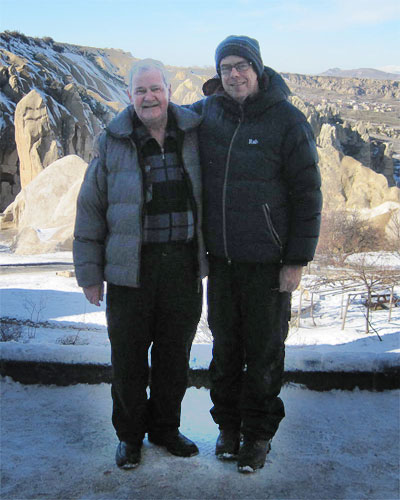
It's an amazing landscape, and one which I feel I will most definitely have to return to. I've been shooting a lot of Hasselblad square aspect ratio images all week with my friends Sonja and Ali. Ali is from Istanbul, and I was fortunate to meet him through one of my workshops last year. We got to talking and he suggested I come out to make some photos during the winter here.
The landscape is otherworldly. I hope to have some images to show you all once I'm home, and have them processed.
In the meantime, here is a photo of me with my dad (he's the handsome chap on the left). I've often taken my father with me on some of my private photographic adventures. He came with me to India and Nepal five years ago, where I made lots of portraits. He's enjoyed himself immensely, as it's been a really nice social outing, with two photographic friends.
I would like to thank Sonja and Ali for organising the trip to Cappadocia.
We've done a bit of sightseeing as well as the usual '6am early morning starts', the ones where you get to see some exceptional landscapes in some exceptional light.
Wish you were here.
Flights and carry on camera bags
Lately on my travels, I've found that my discreet ThinkTank Airport International trolley bag hasn't managed to make it as carry on, when I've been flying around. Simply because some of the airlines are now starting to weigh the carry on.
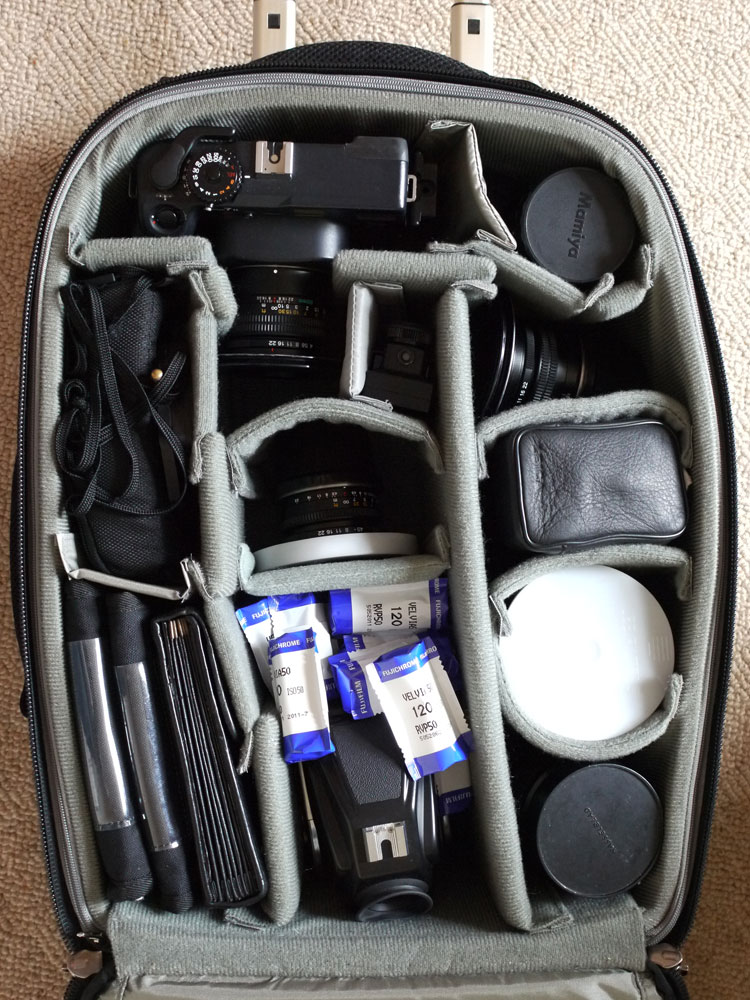
This has happened to me twice in the past month: flying to Tasmania from Brisbane, and flying to Capadocia in Turkey from Edinburgh. On both occasions the weight restriction was around 8kg, which turns out to be pretty much the weight of the ThinkTank airport international bag when it's empty. I know this, because we tried to lighten the contents of the bag while going to Tasmania, and I ended up with the bag completely empty and it still weighed around 7KG.
So I've had to do something I've always feared doing: check in my camera bag, and hope it arrives at the other side all in one piece. On both occasions so far, that's exactly what's happened - the bag has arrived intact and all my possessions inside the bag were still there too.
So is there a solution to flying with camera equipment? I don't think so. You could argue that:
a) get a bag that weighs almost zero and use that to transport your gear. It still means you'd have to be careful not to go over the 7kg limit (which I think is achievable), but the risk is that for any reason they decide to check in your gear, the bag may not be sturdy enough to protect it.
b) The robustness of the ThinkTank camera bag saved my gear. I'm sure this is true. It's a very study bag. But it comes at a risk of being checked in because it's so heavy.
c) Take all your camera gear out of the bag and put it into pockets on your jacket. I've done this before and it does work, but it's a hassle and stress worrying that you're going to lose something in transit.
d) Dump all the heavy gear: No more SLR's, no more medium format equipment. Go Micro-Four-Thirds for example. If you are a digital shooter, I think the options for lightening your load are becoming more practical as camera systems become more compact. I've been thinking for a while that SLR's are outmoded now, and results from more compact systems are just as good, or close enough to beg the question why we're carrying all this large gear around.
I did have one panic though. I checked in my camera bag with all my photographic film inside it. I managed to get them to retrieve it. But I'm rather curious if this 'urban myth' about check in baggage x-ray machines being much stronger than the carry on, is true? Consider that Fujufilm ship their products around the world: they must go via the hold of large planes, and I doubt they would be exempt from xray. So I'd really like to hear from anyone who knows the answer for sure about this one.
In the meantime, I'm much happier now just checking in my camera bag. My gear is insured, and I will take the film on the plane with me.
* Since I wrote this, I've decided that the ThinkTank Airport International is now a lost cause. It is simply too heavy to use as a carry on bag, if it gets weighed. Most airlines are limiting weight to around 9kg, and the bag alone is around 7kg. If I load it up to the capacity, the bag comes in at around 15kg. So it's a lost cause now.
Instead, I am just going to board the plane with my belt-bag. It holds three lenses, all my filters and a camera body. I will pack my film in a 'duty-free' plastica carrier - this is how I used to do it previously.
A work in progress
The creative process is a mystery to me, but one which I fully embrace each time I begin work on anything I do.
Last year I spent around seven months putting together my 2nd book 'Iceland, a Journal of Nocturnes'. It's journey from inception to final version was very interesting to note, and see how it flowed and changed direction.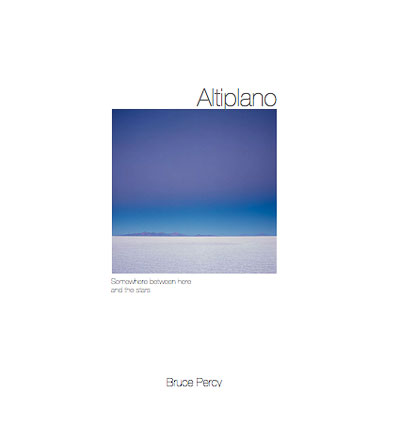
I feel that anything I put my mind to, requires a final point of visualisation. In other words, if I let myself dream and imagine what the final work will be like, it helps me steer my creativity towards that goal.
I knew with the Iceland book for example, that I wanted it to be something a little different from just a collection of images. The book morphed over time to become a journal of sorts; a collection of stories and thoughts and experiences of photographing the Icelandic landscape over many visits over many years. It was my good friend Mike Green who pointed out that there was a particular chronology to the way I'd laid the photos out, which suggested a photographic day, shot over many years. The book was highly thematic too, in that it is a collection of nocturnal images; images that have been shot during the small hours of the day.
The book has sold very well so far, but the next stage I have to work on is getting UK distribution for it. I would like to see it on the book shelves of major book retailers like Waterstones for example. I'd also like to see it in Reykavik Airport's book store, but this is proving to be a stumbling issue because I cannot get a distributor for it. Daniel Bergmann has kindly offered to assist in any way he can.
Still, things move on, and I can't help being drawn into 'dreaming' and 'visualising' my 3rd book (if this will come to fruition, is anybody's guess, but if it does happen, I feel it will be somewhere down in the line in 2014, not this year). The reason being is that I've found a strong subject matter, but I don't think I've explored it enough yet to provide a complete book on it.
I've already drafted up a prototype for the book cover and even a title 'Altiplano, Somewhere between here and the stars'. It's really just a working title, something to help me focus, and get inspiration from.
And what about the title? Why have I chosen this? Well, I think for me, the Bolivian Altiplano is the closest I've come to feeling that I was on another planet. Not only does the landscape feel otherworldly, but the lack of oxygen at the altitudes of 3,600 metres really does challenge you. The altiplano really is 'somewhere between here and the stars'.
So what are my plans for this? Well, right now, I don't have enough material for the book. There are locations on the Altiplano that I wish to return to, so I can make a more valid study of, during the low light hours. I'm therefore drafting up plans to go back this year, on a private tour of the Altiplano. This is some major undertaking, because it's not possible to do it yourself, safely at least. I will have to hire a group of Bolivians to help me - an experienced driver who knows the terrain, a guide to help me out with the logistics, and a landcruiser. It's an expensive operation, but one in which I feel I really have to do.
I'm sharing this early draft of my proposed book, to illustrate how the creative process can be brought on to guide you, if you have a final vision in mind for your dreams. At the same time, I will remain open and flexible to whatever comes my way, because creativity cannot be planned too rigidly. There has to be room for the chance encounter, the new direction, and a willingness to go wherever the project decides to steer you in. It's an immensely exciting journey. Maybe in 2014, I will have something worthy to show you. But that's the beauty of the creative world. We really never really know, we just have to go with our hearts.
Sighting the Tasmanian Devil
This week, we've ended up in the Tarkine region of Tasmania. We've been very fortunate to have been invited to use the land of Geoff King, who runs 'Kings Run Wildlife tours'.
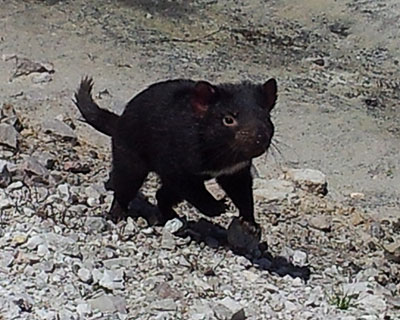
Geoff is a lovely man, full of interesting stories about the land that has been in his family for generations (although the land private, it is part of the Arthur-Pieman Conservation area which is currently seeking world heritage listing), and he took us on a tour to see midden's created by ancient aboriginal people. Our little camper van is situated in a region near the coast line (which is very beautiful) and each night we've noticed that we have a Wombat as a neighbour. Each night the wombat comes out to eat his grass and just hang out. We've also seen a Tiger Snake during the day, which I've been informed is not the kind of snake you'd want to get close to. There have also been echidna's, wallabies. Quite a lot of wildlife as it has turned out.
But the highlight of the week for me has been the sighting of four Tasmanian Devils. They are nocturnal in nature, and are believed to be about 500 of them left in the wild now. Geoff runs tours, to show people them on his land. He was very generous and set up a lighting rig with some recent road kill near a vantage point for us so we might have a chance to see a Devil or two. Well, we switched on the light just after sunset (Devils are known to come out to feed just after sunset), and we came back about an hour later. While we were approaching the location we could heard the sound of bones being cracked and we knew we were in luck - there was a Devil feasting on the road kill.
We sat for maybe around 40 minutes and watched four Devils take their pecking order at feasting on the road kill. One of the Devils had white spots on its black coat while another had white stripes. They were extremely sensitive to sound and occasionally we would scare them off by our movement. Each time they retuned after maybe fifteen minutes of waiting, to continue feasting.
I'm no wildlife photographer, so what we did shoot of the Devils, isn't really up to much (why I didn't leave home without that 600mm f2.8, I'll never know ;-) but it was certainly something I'll never forget.
If you do venture to Tasmania, do consider coming up to see Geoff King's location. The landscape here is quite stunning and his tour I believe, is unique. I think he's sold out pretty much in advance.
Oh and yes, Tassie Devils do exist. Just look them up on Wikipedia. They are an endangered carnivorous marsupial, and they are rapidly dying out because of a contagious mouth cancer. There was until perhaps 60 years ago, a Tasmanian Tiger, but that was hunted to extinction. I hope that the Devil has a better future ahead of itself.
Postscript, the day after I wrote this blog posting, we sighted two Tasmanian Devil juveniles, on our way out of Geoff's land. We were told later on that it's often possible to see babies in the summer months, when they are extremely hungry. The photo that now accompanies this posting was made from our campervan, with a Galaxy SII mobile phone (I'm no wildlife photographer!), but I hope you enjoy the picture anyway and can appreciate perhaps how special the sightings were for us.
Tasmania & the Tarkine
I'm in Tasmania right now, and last night we went to see Chris Bell talk about his fabulous new book on a very special place in Tasmania - the Tarkine.
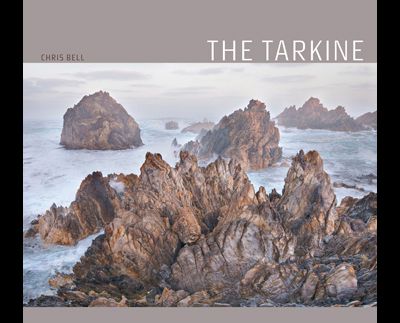
Chris is an extremely accomplished photographer ( a peer of the late Peter Dombrovskis ). Chris has published several really beautiful books on Tasmania (I own 'Primal Places', which I can highly recommend). Anyway, Chris knew I was coming to the talk and he very kindly invited us round for some tea at his home on Mount Wellington. He was so generous with his time and showed us some really nice hiking suggestions for us to do while we are here in Tasmania.
Anyway, I'd really like to talk about Chris' book about the Tarkine. The Tarkine is a pristine and rugged wilderness area in north west Tasmania. It encompasses coastline, forest, rivers and mountains with surprising diversity, not only in geology, but in photographic potential. At one stage of Chris' talk, he mentioned how he was accompanied by a Tasmanian Devil on one of his beach walks. He suggested that in the future, this kind of encounter may be a rare thing. I'm hoping to see some Tasmanian Devils myself (yes, they really do exist - but they are fighting a battle against serious loss of population due to a contagious form of mouth cancer).
There was quite a discussion about the region of Tasmania during the book launch and it was interesting for me to hear such strongly voiced opinion and objection to the amount of (over 50!) mining permits that have been applied for, by mining companies who wish to start tearing up sections of such a really special landscape. I often like to think that the careless mistakes of the past with regards to special regions of the world is now a thing of the past, but as the speaker declared last night, the Tarkine should have a preservation status, but instead, there is abundant misuse and damage to the area.
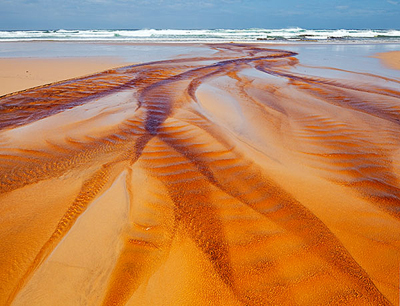
If you'd like to know more about the conservation aspirations for the Tarkine, then you can find out more here. Chris' book is a valuable record of the region and if you'd like to know more about his book, then please do follow this link.
Last order date for Christmas delivery
Dear all, I've seen a few people mention that they hope to get my Iceland book from Santa this year.
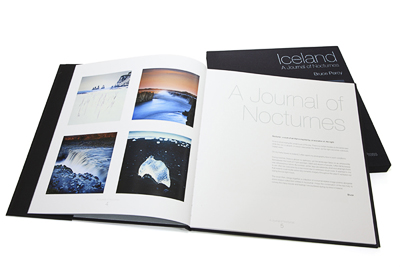
So with that in mind, I’d just like to let you all know of the last posting days here in the Uk, should you wish your family to order a copy for you, and receive it in time for christmas!
The last posting days for the UK are as follows:
- Tuesday 4 December, Asia, Australia, Far East (including Japan), New Zealand
- Thursday 6 December, Africa, Caribbean, Central America, Middle East and South America
- Friday 7 December, Canada, Eastern Europe and USA
- Tuesday 11 December, Western Europe
The limited edition variants have been selling the fastest, and there are not many of the Deluxe editions left. But there are lots of different variants of the book to suit all budgets.
If you wish to get a copy of my latest book, you can order it here.
Finding Inspiration through Concepts
Everything around us has meaning. It is up to us to see that meaning, and to apply some form of structure to it. I often feel as though my whole photography career to date, has been one based on intuition. It’s quite a radical departure from how one often navigates through the waters of life: We see what we want, and we strive to reach it. We often decide upon a path and try as best as we can to get onto that path and follow the direction we wish to take. I think this is a matter of force, rather than a matter of flow.
Living a creative life means being open to possibilities, and things happening along the way that you didn’t expect. These surprises are often gifts, a sign of a new direction we should explore in our creativity, rather than obstacles, as we often see them. But it’s really up to us whether we choose to do so. Nothing should be set in stone.
However, there is maybe one aspect of creativity that is a little bit different from this, and that’s the notion of a concept. Oftentimes, concepts come to me slowly - either by seeing a pattern in the work I’ve created to date and realising there is a story there to be explored and unfolded. Other times I have a strong sense of what it is that I wish to convey and this moulds the direction of the work I am taking. But mostly I feel, it is a combination of both. The work guides me, shows me where it is going, and I begin to apply a sense of structure to it. I often like to think this is part creative and part analytical - it’s me utilising two different aspects of my character. Sometimes one of them is more dominant than the other; I seem to feel I can be very loose in what I’m creating, like it’s really rather irrelevant and when I find something of substance within the randomness of my creations, I will move into a more structured way of assembling the pieces, looking for coherence in what I’m doing.
I feel my latest book was very much like that. What started out as a terrible trip to Iceland in the summer of 2011, catapulted me into creating a thematic piece of work. I wasn’t aware during that summer that what I’d captured was perhaps a very strong set of images. It hadn’t even dawned on me at the time that there was a strong story waiting to be sifted and filtered and brought into focus once I’d done reviewing all the transparencies I’d created.
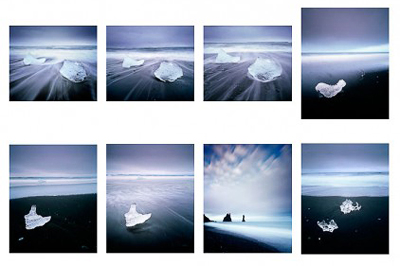 It was only once I’d done the editing stage that I realised I had something concrete, something perhaps stronger than the sum of its parts. It surprised me even to know I’d created such a thing because I never saw it, never envisaged it at the time of capture. I had no preconceptions about what I was doing, and I think that’s really important when creating things. You have to go with the flow and just accept what happens.
It was only once I’d done the editing stage that I realised I had something concrete, something perhaps stronger than the sum of its parts. It surprised me even to know I’d created such a thing because I never saw it, never envisaged it at the time of capture. I had no preconceptions about what I was doing, and I think that’s really important when creating things. You have to go with the flow and just accept what happens.
Six months later I felt I wanted to put a book together about these black sand beaches, but I didn’t feel I had enough material. I also felt there was no theme at hand for them. I toyed with the idea of calling it all ‘black sand white ice’, but that just didn’t sound elegant enough for me. If the title isn’t elegant, then it’s unlikely that the concept behind it is either. After a few workings I came up with the notion that all my images of Iceland to date had been created during the nocturnal hours. There was now the sense of a concept behind the images. The work had dictated the concept, and in turn the concept dictated how I would lay out the content of the book and in particular, the tone of the text that would be included inside it.
The text inside this book you see, is rather a little dreamy. It’s less of a ‘how I made this shot’, and more a case of expressing how I felt, and how I interpreted what I saw. Actually, now that I think about that, how I felt and how I interpreted my landscape is in fact a description, or maybe an understanding of the motivations I had to create the work. For instance, I often found some of the ice sculptures to be like animals, some of them were metaphors for the icelandic landscape. One in particular looked like an ice-seal, and there are often seals swimming around the coast line. So I think the 'dreamy' text does indeed explain how the work was created. But overal, Iceland is a dreamlike landscape, one which needs to be absorbed and considered, and I wanted to reflect that very much in the text.
I’d also like to stress that I don’t see myself as a photographer. I feel that’s too much of a label, and it’s perhaps a limiting one. We are creative people. We create things, and I emphasise this point, because I feel that my iceland book is not a book of photographs. It is a concept, something to be considered as a whole.
I found the images seem to dictate the theme and that theme dictated how the book should look. For instance, Darren (my book designer friend) and I discussed the colour of the cloth at length because we felt it should be similar to the volcanic dark sands found in Iceland. Everything was a decision based upon a theme. I felt I was creating a piece of art in some way, rather than a book, and the photographs were only the beginning of it. Why stop at creating the images, and hand over the rest of the design to someone else? Surely you should be involved in how your work is conveyed, reproduced and how it is presented? Surely you have a say in how you feel it should all be wrapped up? And most importantly, you will know how it should be presented, because you understand the theme or concept behind your work.
So what now? Well, at the moment I feel I have pretty much a clean slate. It's quite liberating to feel that I can close off a piece of work, and now forget about it. The iceland book was perhaps quite an absorbing project to be involved with. Things run their course, and I can now happily say it's finished and I'm already looking forwards to other projects I have in the back of my mind. I've started looking at some of my other work, to see if I can find a theme, a concept of some sort, and I think I've begun that process. It's rather exciting to feel that one thing leads to another, and by simply being open and experiencing my existing work in a new way, I can see something lurking, waiting to be pulled out and developed. Maybe something new will come of it. I really don't know, and I guess that's what's so great about the creative process, things often have a way of taking on a life of their own.
Telling your story?
Over the past few weeks, I’ve been thinking about the medium of photographic books and why I find them so attractive. It’s been an interesting time for me designing (with the fantastic help of Darren Ciolli-Leach) and putting together the concept behind my Iceland book. I’ve found the entire journey of putting together that book quite a stimulating thing to do as it’s allowed me to reflect upon my own work and a few other aspects that I’d like to convey to you through this blog posting.
My friend Mike Green has written a very nice hybrid-post, which covers his input to my own book (he wrote the afterword) while also covering the reasons why he feels photographic books are still a valid medium in this current age.
So I think I will start there:
Validity
In an age where most photographers experience others work through the web, I feel there’s been a demise in the appreciation of photographic books for one reason only: generation gap. In an time where anybody under the age of 30 has probably never used film (ok, I appreciate that this may be a generalisation), so too is it a reality that a lot of sub 30 year old’s find their photographic inspiration through the web and through mainly electronic media only. The printed page doesn’t get a look in. I know this, because I’ve had a few emails from buyers of my first book telling me that their purchase was their first foray into the printed monograph medium.
I don’t think this is a particularly bad thing. It’s simply a case of changing times and trends. I wish photographic books were more prevalent though, because I think there’s something quite beautiful about them in more ways than one. So I’m going to talk about them now.
Presentation
The design of your own book allows for an extremely personalise way of showing your work. There are certain boundaries though, similar to the presentation boundaries that websites must conform to. Some fonts for instance are easier to read than others, and the images are confined to a physical space in a way that they aren’t on a web site. But overall, I feel that printed images in book form are more engaging that their electronic brothers, because the printed page can illustrate more detail. The images are more intimate as a result. I know this too, because I’ve had a lot of buyers of my first book email me to tell me that there’s a subtlety to my work that is present in the book and not visible in the jpegs on my website. I find that very gratifying to know that viewers of my books can appreciate a whole new level to my work that has maybe been hidden from them on my website. Books allow viewers to get closer to your work, which is perhaps the most fundamental reason for doing a book in the first place.
Flow
You get to tell the story your way. It’s cast in stone. There’s a sense that everything everybody sees in the book was your choice - books can often tell the viewer a whole lot more about you than a website can, because a lot of websites are quite homogenous in usability. They encourage you to depart from any flow or sense of story that the photographer wishes to convey at any moment and navigate around the whole web at a push. Books on the other hand are hard-wired. They don’t often encourage general browsing because the mere act of taking up a book to view it engages you in a way that is more consuming. I often find with books that once I start looking through them, I’m there for the entire journey, and it often feels a shame, or an injustice is perhaps a better word, to just fly through the pages randomly (something which I have no conscience about doing with anybody’s web site).
So with a book, you have more of a chance to convey the story and engage the reader in a way that prevents them from engaging the butterfy-brain habits of a web user.
Design
On the subject of designing a book, there is a whole new language to be learnt. From working with my graphic designer friend Darren Ciolli-Leach, I’ve discovered that I did not have the skills to fully convey what I wanted with my book. In short, my efforts were amateurish, or maybe just a bit rough round the edges. Having a proper book designer there to work alongside you is an important step forward, but it’s not half as important as finding someone who understands your work, your ethics and tastes. I’m extremely fortunate to have found an visual-soul-mate in Darren. He’s like gold to me.
But I love to design my books. I often start with a mock up of the cover and a suggested title. Just the draft title can aid so much in getting my creativity flowing, and for me to think about how the book will come together. And that coming together is vital. I feel photographic books have to be strongly thematic in nature to work. Get the theme wrong and the concept will be weak and if the concept is weak then the work contained therein, regardless of how strong it may be, will be diluted to such a degree that the work will suffer.
I also see the design of a book similar to setting out a portfolio of work. The sequencing of the work is very important and if some of the images do not feel as though they belong - because they maybe look different or are slightly off topic, this can throw the presentation of the portfolio into disarray and again your message is diluted and again, the work as a whole may suffer.
A time of reflection
Putting a book together allows you to review your older work, and reflect upon where you are with your current development. It's a wholly absorbing process considering and selecting the work to be contained within the covers of your own book. For my iceland book, I discovered that in many ways, my style has changed, become more abstract in theme over the duration of eight years. I also discovered that I'd had a predisposition to the square aspect ratio for a long time, often cropping my Mamiya 7II images to 1:1. In some ways, my style changed, while also remaining the same. It's such a beautiful gift to be able to see your own progress or development laid out in front of you for you to see.
Timeliness
I think lastly, there is the point of timeliness. You have to know when you’re ready to produce a book, and be so in tune with the work that you know it will stand up well as a piece of work. In the case of my Iceland book, it was the culmination of 8 years work, bringing together shoots from 2004, 2011 and 2012. It felt for a long time that I had plenty of work from Iceland, but I couldn’t see what the story was. I remember discussing proposed titles for the book with Mike Green as I searched for a theme to the work. I think it was only when I realised that most of the work had been created during nocturnal hours, that I saw the theme - the book was indeed a journal - a collection of stories - albeit photographic-stories collected over a duration of 8 years, telling the story of a day, shot over many years. When I got my title ‘a journal of nocturnes’, things started to come together very quickly and quite strongly too. This was further cemented by Ragnar Axelsson writing to me and explaining that he felt the images were ‘poems’. To me, what he was saying was that they were individual stories, strung together, the way a journal is.
Another aspect of timeliness was the review stage. I had around five different reviewers and one of them - Mike Green, made an observation about the sequencing. He felt very much that there was a journey in that sequence, which mirrored the flow of the water from the sea to the glacier and back to the sea again. I hadn't noticed it myself, but this in turn gave me more confidence that what I was putting together felt right. This also led on to me asking him to write about it. And so Mike wrote a lovely afterword about the entire book, and it felt like such a great way to conclude the book. Sometimes the story isn't finished when you're putting together a book. Sometimes the story unfolds as you work on your book idea. I know that my Iceland book was originally thought to be finished in January of this year, but in reality, it kept on morphing, growing and becoming something more cohesive over the months until June or July. I find that a very engaging and inspiring way to go through life, knowing that when you're finished, you're sometimes only completed phase one, and that there are further iterations that will fine-tune, or alter the course of what it is that you are producing.
And what about the future?
I'm already playing around with ideas for my 3rd book, and the theme for that one seems to be coming together very quickly, but I'm missing some photographic content. This in turn is feeding my inspiration to get back out to a particular landscape to spend some more dedicated time there, so I can finish the story. It seems that sometimes, books are the end result of a collection of work, and other times, they can be the instigators of new work. I find that extremely exciting and inspiring.

